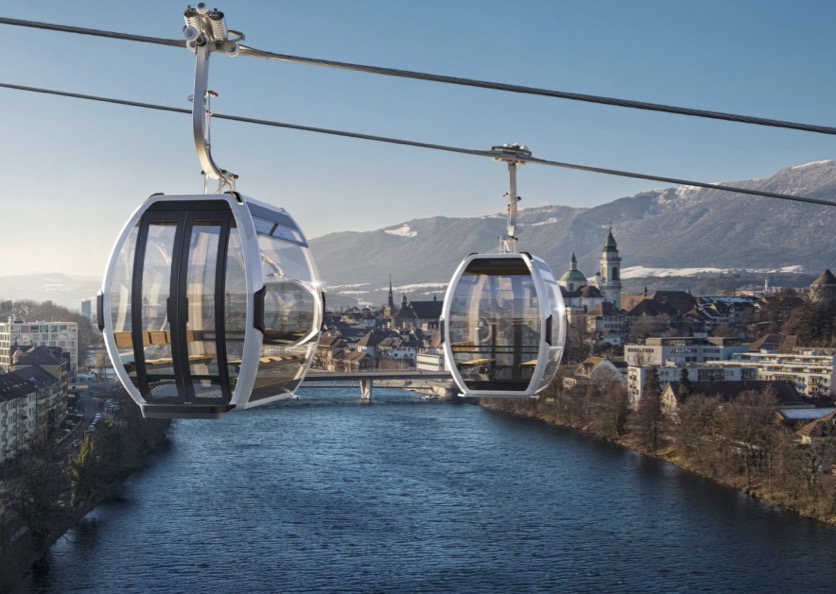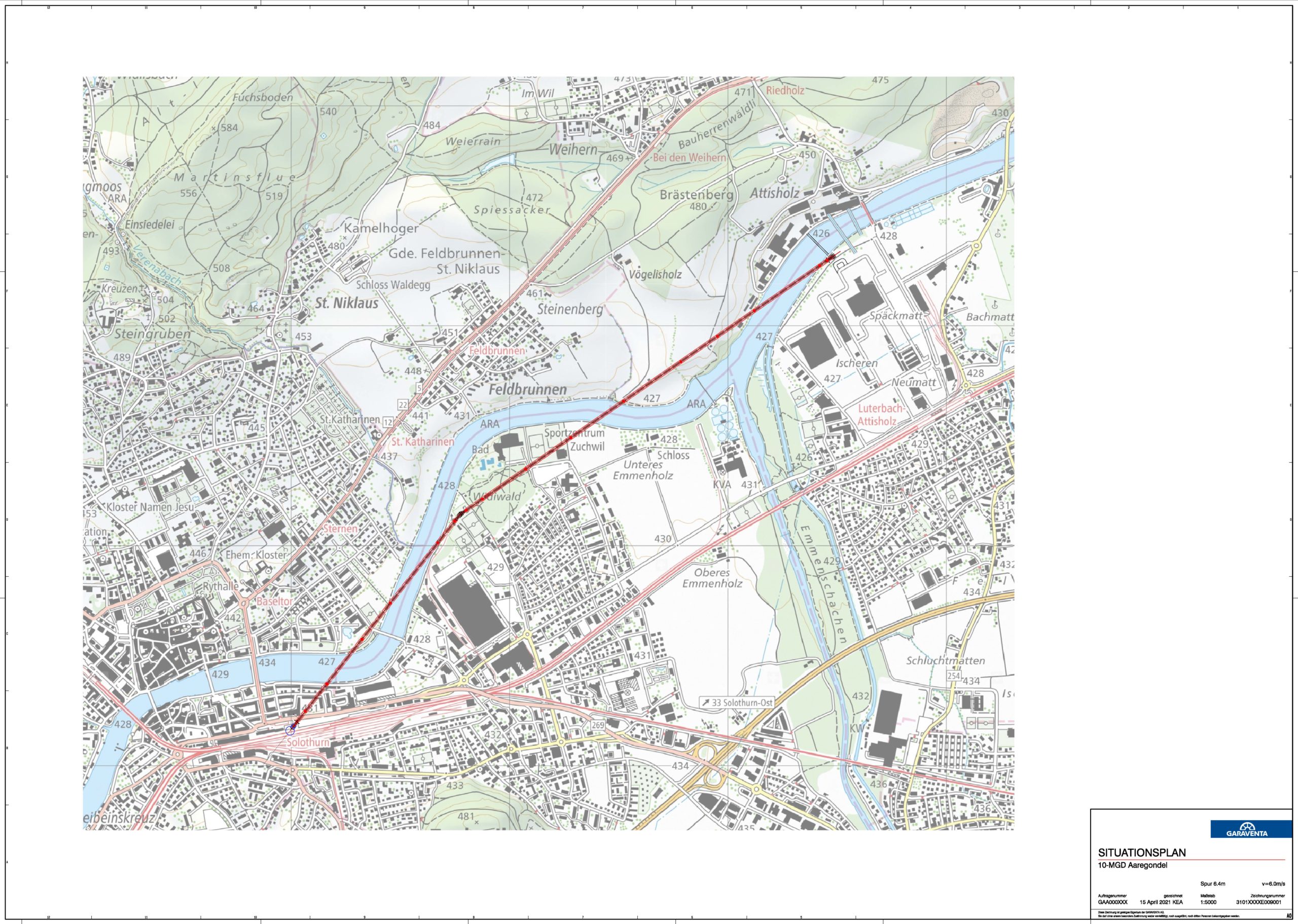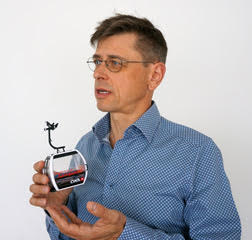
Cities, SI Urban 1/2022, Tourism
Aaregondel project now under review
The society, which comprises various institutions, is specifically pursuing the idea of an urban cable car from the main railway station in Solothurn, going east across the Aare river to the exciting fields of action in Zuchwil, Riedholz and Luterbach.
“The Aaregondel project will provide considerable relief to the local public transport in the area of the district expansions in the east of Solothurn, conveying all user groups to their destination quickly, in a relaxed way and with a unique panoramic view.
It will guarantee a sublime travel experience instead of wasted leisure time on congested routes,” says initiator Reto Paul Grimm, who is also the designer as well as the area and property developer. He sees the simple development axis of the planned cable car as the perfect addition to the public transport network and is therefore responding to the positive development with which the cantonal capital is moving forward.
Cable car
The plan is for a 3.3-kilometre single- cable circulating track with 16 supports and 74 10-seater gondolas; it will cross the Aare river four times. “Aaregondel” should transport up to 2,000 people, bicycles or pushchairs per hour – with no waiting times, as departure on the eleven-minute route is possible every 18 seconds.

Stationen
“Aaregondel” will begin at Solothurn railway station, the town’s central transport hub with international, regional and local rail and bus traffic. The second station will provide access to Zuchwil sports centre, a district that will soon grow to 840 homes.
In turn, the terminus will serve the transformation project of Halter AG on the Attisholz brownfield site in the south of the community of Riedholz, where a district for 2,500 people will be developed. The connection will also benefit companies in the industrial area of Luterbach, especially “Biogen” and its expansion plans.
“What is being created along the Aare in Solothurn will attract many people into the region. The transport infrastructure must not miss this development but rather grow together with it. A cable car here is an ecological, efficient, convenient, conservative and impressive solution,” Grimm says.
What is important is that the cable car will be constructed and operated by the state, and that “Aaregondel” will be integrated both in terms of fares and structurally into the public transport network.
Hurdles
However, the road to achieving this objective is fraught with obstacles and the “Aaregondel” interest group is expecting resistance. “The landowners represent one hurdle. We are largely on public land but we also cross private spaces,” Grimm reports.
The second hurdle is nature conservation. The cable car does only pass over one conservation area, without building on space within it. Yet even this could be legally inadmissible.
The legislator is being asked here to allow special authorisations, in particular since the cable car is generally a very sustainable mode of transport: it requires little land and can be operated with low emissions (CO2 and noise).
Procedure
With the financing of the feasibility study, the cable car initiative has at least taken the first step. The study will be commissioned at the start of 2022 and a result is expected in the summer.
“To begin, the University of Applied Sciences and Arts of Northwestern Switzerland will present its work to the stakeholder management, which also represents a valuable basis for the planned feasibility study,” Grimm reports.
Both studies form part of the package that the “Aaregondel” interest group will present to the authorities, politicians and general public in autumn 2022. From this point, it will be up to the public authorities to develop the cable car further.

Reto Paul Grimm, Initiant, Präsident Interessengemeinschaft “Aaregondel”
“It is astonishing that there is still no urban cable car in existence in Switzerland, a motherland of the cable car. The potential here is huge. For projects such as our Aaregondel actually to come to fruition, stakeholder management is immensely important.
We need to get all stakeholders on board in good time, taking their needs, concerns and wishes seriously. That requires a lot of energy, discussion and information. It is worth it though, as the solution is in the air: efficient, conservative and impressive!”







